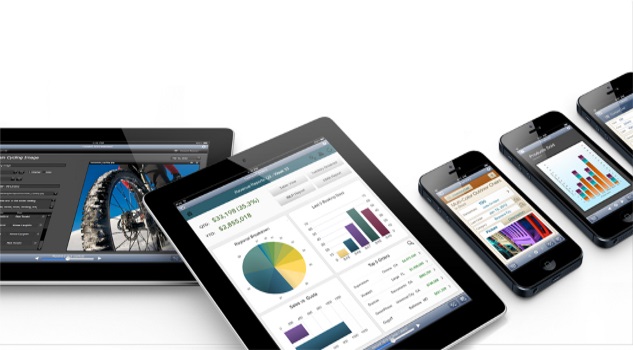A recent report by Forrester found 46% of executives believe digital will impact more than half their sales in less than five years. Digital transformation is affecting every industry and individual. Mobility and a more flexible workplace means business can be done anywhere, any time.
Organisations of all sizes and types have embraced the use of apps to manage this transformation. Off-the-shelf apps tend to be generic, in order to appeal to a wide audience, and, while they may get the job done, there’s little to no personalisation available. You may also end up paying for features you don’t need, and not get the ones that will best serve you.
Fortunately there is another option: custom apps.
The rise of custom apps
Gone are the days when SMEs did not have the means to create custom apps. Now, with new software platforms, almost anyone can build a custom app from scratch with virtually no coding or programming skills required.
Customisation gives you an app that suits your exact business needs, while still enabling employees and customers to securely access vital information anytime, anywhere, and extend mission-critical processes far beyond the boundaries of your enterprise.
Goals, needs, and scenarios
A well-conceived planning process is critical to the success of custom-app creation. Evaluate the goals of the solution you want to create. Define the needs of team members to ensure the app will address their specific pain points.
Create user scenarios to define the features and functions required. Determine who will use the app and write a user scenario for each role. What are the users’ roles and responsibilities? Will multiple users use the app at once? Are their roles similar or different?
Then consider what particular users need the app to do. What problems are they trying to solve? Assess the strengths and weaknesses of current processes and the requirements of different teams.
Understand its likely use patterns. Will it be used in bright light? At night? What devices will be used to access it? Will users always be able to connect to the server?
Define your requirements with an overall description of how your custom app will work and a detailed list of features and functions based on your user scenarios.
Security and deployment
Security is a critical component of a custom app. Before building it, consider whether you will be storing customer or employees’ personal information, other sensitive material – such as trade secrets, future-product plans or credit-card information? What regulations must you comply with?
There are several ways to address security-authentication management. One is to create user accounts and passwords using app software; use external authentication involving outside systems – this may add complexity. Encrypting your data also adds complexity. Investigate all the available options.
Test and refine
Now it’s time to design your custom app. Start with a prototype – it can even be a paper draft – so you can test functionality and usability early in the development process. Get its users to confirm that it will meet their needs.
Good development is iterative. Validate your design with the users before spending too much time in development. Keep refining your design with feedback from users at each stage.
Building a solution that’s right for you
While not an exhaustive list, the above recommendations for implementing custom apps are key before the creation and deployment processes begin.
Business is moving at lightning speed. Understandably, you want to get an app up and running as quickly as possible – conventional wisdom says grab an off-the-shelf solution, but that may waste time as you struggle to customise the app to meet your needs, or money as you pay for features you won’t use.
With the new platforms available you can build custom apps from the ground up — and you don’t have to be a huge corporation or have an advanced degree to do it.
Andrew LeCates, Director – Americas Sales, FileMaker, Inc.










